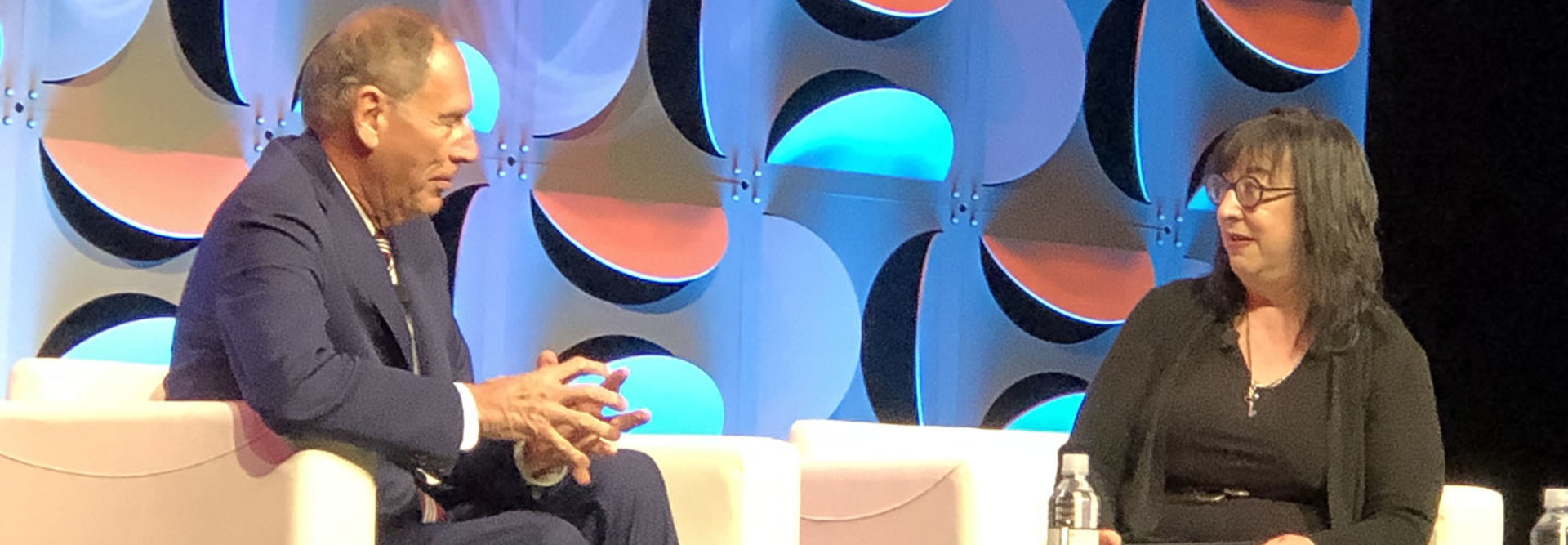ATA19: Former Cleveland Clinic CEO Toby Cosgrove Bullish on Telehealth’s Future
In a closing discussion with health economist Jane Sarasohn-Kahn at the American Telemedicine Association’s 2019 conference in New Orleans on Tuesday, Toby Cosgrove compared the trajectory of telehealth in the U.S. with flying on an airplane.
“It’s really slow to take off, but then it zooms up,” the former Cleveland Clinic CEO said. “It’s going to be part of people’s expectations as we move to more consumer-oriented care, particularly for millennials.”
Cosgrove, who now serves as an adviser to Cleveland Clinic, as well as Google, stressed that patients aren’t going to want to go to the hospital for advice or testing; rather, they’ll want to stay as far away from a doctor’s office as possible.
“They get their food delivered. They get Uber to pick them up right at their door. Why should healthcare be any different?” he said.
MORE FROM HEALTHTECH: Check out all of our stories from ATA19.
Telehealth a Boon for Monitoring and Second Opinions
At Cleveland Clinic, Cosgrove said telehealth has been a boon, particularly because of trouble getting enough intensivists to cover hospitals around the clock. The organization monitors all of its intensive-care beds 24 hours a day.
“It’s done two things: reduce the length of stay in the intensive-care unit and reduce the mortality rate,” he said. “It’s hard to argue with those.”
It’s also helping the health system’s primary care physicians to get quick second opinions from specialists at the main facility.
“There are a lot of ways, both internally and externally, that you can use the communication capabilities that are there,” Cosgrove said.
JOIN THE CONVERSATION: Follow @CDW_Healthcare on Twitter for continued ATA19 coverage.
Coverage and Licensing Hurdles to Telehealth Still Persist
While reimbursement continues to be a barrier to telehealth use, Cosgrove said it’s a hurdle that’s gradually eroding, particularly thanks to new Centers for Medicare & Medicaid Services policies.
“Medicare is now paying for telehealth. An increasing number of insurance companies are paying for telehealth visits, and more and more emphasis is going to be on the consumer paying,” he said. “Look at what’s going on across the country with copays. Copays get pretty high after a while, and so the pay for a televisit is going to be similar to a copay, and with much more convenience.”
One hurdle that remains, which Cosgrove would like to see modified, is licensing.
“One of the things I’d like to see change is the ridiculousness we have of licensing in every state,” he said. “We have to license in 50 states. It’s crazy. I don’t know why we do that. That clearly is something from the Dark Ages that we need to get past.”
Keep this page bookmarked for articles from the event. Follow us on Twitter @CDW_Healthcare, as well as the official organization account, @AmericanTelemed, and join the conversation using the hashtag #ATA19.









